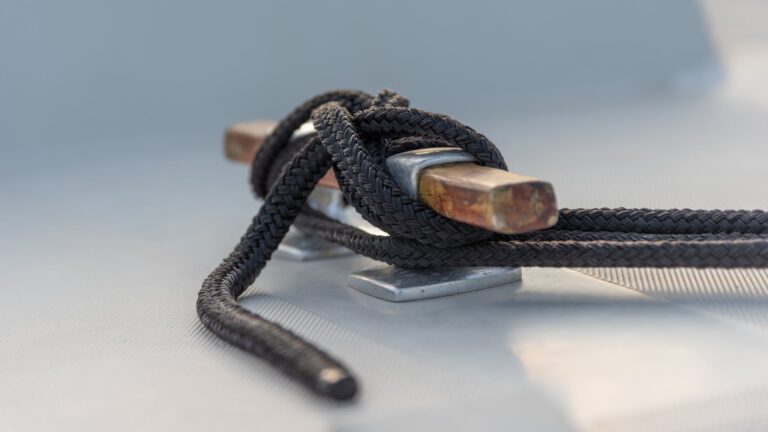What are sailing commands?
- Introduction
- What are sailing commands?
- Standby Command
- Made Command
- Cast Off Command
- Heading Up/Bearing Away Command
- Sheet In/Sheet Out Command
- Other Commands
- Significance of Commands
- Safety Considerations
- Conclusion
Sailing Commands: A Comprehensive Guide
Sailing can be a thrilling and rewarding experience, but it also requires a great deal of skill and knowledge to navigate the waters safely and efficiently. One of the key elements of sailing is understanding sailing commands, which are used by captains and crew members to communicate instructions and direct operations on board a vessel. In this article, we will explore the various sailing commands, their purpose, and how they are used in practice to ensure safe navigation of the open seas.
What Are Sailing Commands?
Sailing commands are verbal instructions given by captains or crew members to direct operations on board a vessel, such as changing direction or speed, tacking or jibing, deploying sails, or anchoring the boat in a particular spot. The captain is responsible for issuing these orders clearly and concisely so that everyone on board can quickly act upon them without confusion or delay. They may also be used to coordinate activities between vessels in close proximity to one another, such as when passing through narrow channels or maneuvering around other boats in a crowded harbor.
## Standby Command
The standby command is issued when the captain is preparing to issue an order but needs everyone to be ready for it first. It is typically used when there are multiple operations that need to be carried out simultaneously and it allows for everyone on board to prepare for their tasks before the captain issues his orders. For example, if someone needs to trim the sails while someone else needs to adjust the helm, then the captain might issue a “standby” command before giving each individual instruction on what they need to do next.
## Made Command
The made command is issued when an operation has been successfully completed by all crew members involved in its execution. For example, if a sail was trimmed correctly and all tasks were carried out without error then the captain would issue a “made” command as confirmation that it was done correctly and without incident or injury to any of those involved in its execution.
## Cast Off Command
The cast off command is issued when it’s time for the vessel to leave its dock or marina berth and depart into open waters. It is typically given just before releasing all dock lines from their moorings so that the boat can begin its journey away from shore safely and with minimal delay or confusion between crew members about what needs to be done next in order for them to depart efficiently and without incident.
## Heading Up/Bearing Away Command
The heading up/bearing away command is issued when the captain wants to either raise or lower the boat’s direction relative to wind direction by either heading up (towards) or bearing away (away) from it depending on how much he wants his boat’s bow (front) facing into (or away from) the wind respectively at any given time during his voyage across open waters. This command can also be used for tacking (turning) maneuvers as well as adjusting course during unfavorable weather conditions such as storms where winds may change suddenly requiring quick action from both captain and crew alike in order for them stay afloat safely until they reach calmer waters again once more .
## Sheet In/Sheet Out Command
The sheet in/sheet out command is issued when members of the crew need either bring in (sheet in) or let out (sheet out) sails depending on how much wind power they want their vessel generating at any given time during their voyage across open waters so that they can adjust speed accordingly without having too much drag caused by sails that have been left flapping in strong winds unnecessarily causing unnecessary wear and tear on them over time due too excessive exposure over long periods of time with no respite from harsh elements outside .
## Other Commands
Apart from these main commands there are also other commands which are less commonly used but still important nonetheless such as “belay” which signals an operation being aborted before it is completed due some unforeseen circumstance; “hoist” which signals raising sails; “lower” which signals lowering sails; “come about” which signals turning around 180 degrees; “all hands ready” which signals everyone being ready for an operation; “anchor down” which signals anchor being lowered down into water etc…
## Significance of Commands
Sailing commands play an important role in ensuring safe navigation of vessels across open waters since they provide clear instructions which can be quickly acted upon by all those involved without confusion or delay allowing captains more time focus on other aspects such as weather conditions ahead rather than having worry about issuing orders every few minutes due lack of clarity amongst crew members about what needs be done next . Furthermore having standardized commands also helps ensure safety between vessels operating close proximity one another since they all understand same language making maneuvering around each other easier reducing chances collisions occurring due error miscommunication between two parties .
## Safety Considerations
It is important that sailing commands are always issued clearly with plenty of volume so that everyone onboard can hear them clearly at all times even if there lots background noise onboard such engine running noise making it hard hear individual words clearly . Furthermore its always best practice have backup plan case primary method fails since you never know when equipment might malfunction leaving you unable issue orders quickly enough avoid potentially dangerous situation arising out lack quick response times . Lastly its important remember always take safety precautions seriously while onboard so make sure follow instructions given captain ensure safe passage throughout journey ahead avoiding unnecessary risks taking unnecessarily anytime your voyage across open waters .
# Conclusion
In conclusion sailing commands play an integral role ensuring safe navigation vessels across open seas helping captains coordinate activities easily between themselves well others operating close proximity one another reducing chances accidents occurring due miscommunication errors taking place between two parties . Whilst some commands may less commonly used than others like belay hoist lower come about etc… they still equally important ensuring safety onboard vessel ensuring everyone aware whats going around them preventing unwanted incidents occurring during voyage ahead .







